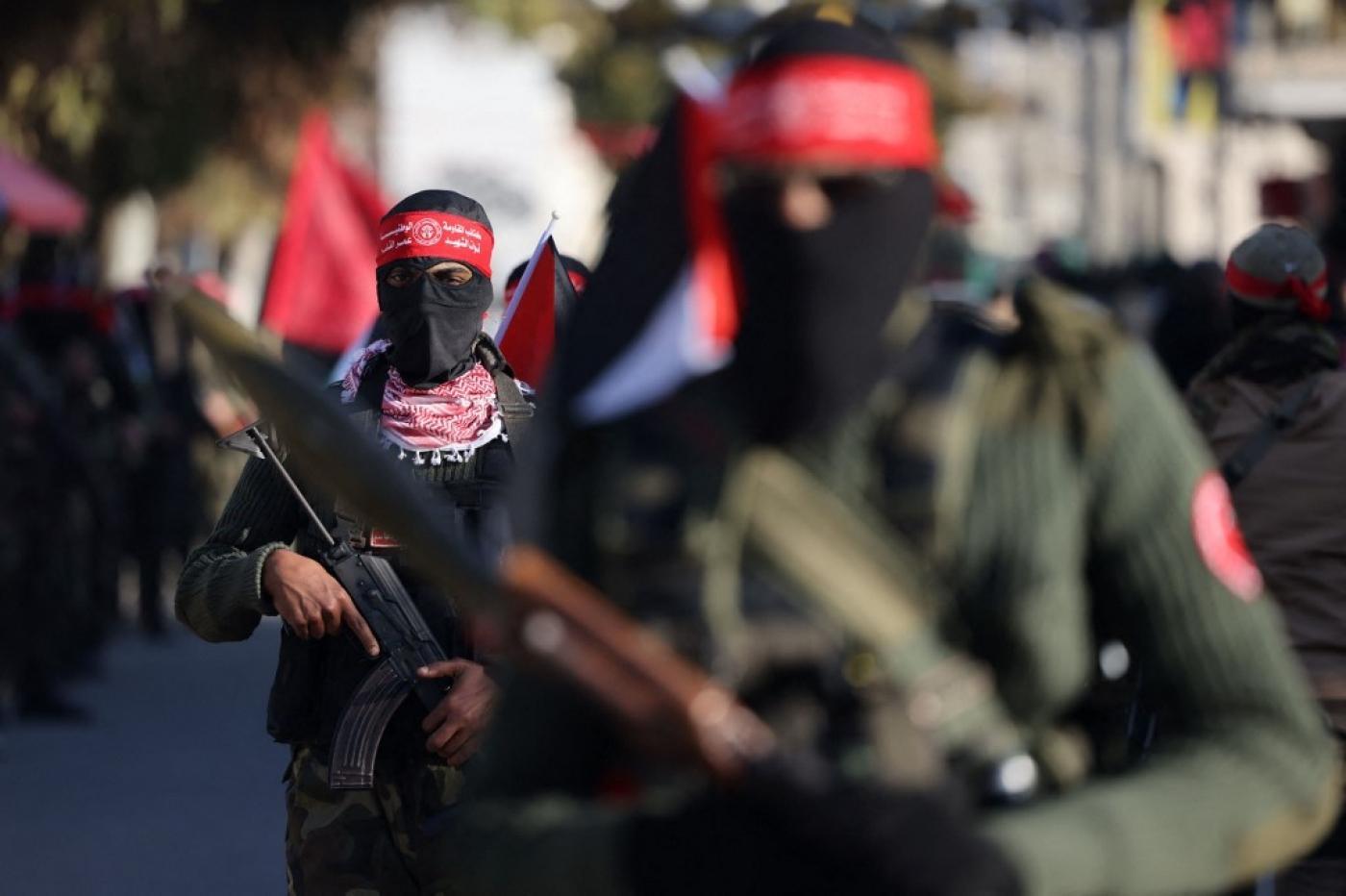
On the first anniversary of the epic crossing of October 7th (the Al-Aqsa Flood Battle), we proudly and reverently recall this exceptional event in the history of our Palestinian people’s struggle. This moment embodied the steadfast will of the resistance in confronting the brutal occupation. This battle represented a strategic shift in the conflict, revealing the enemy’s weakness, fragility, and the cracks in its military security system, further deepening its internal crises.
On this glorious day last year, hundreds of resistance fighters dealt a crushing defeat to the [IOF] Gaza Division, managing to control large parts of our occupied lands within hours and returning with hundreds of captured soldiers and officers.
Over the past year of systematic zionist aggression, the resistance has executed high-level operations that paralyzed the enemy’s military capabilities and confused its leadership, which falsely assumed it could eradicate the resistance within weeks. During the ground maneuvers, the occupation suffered heavy losses in lives and equipment, despite employing scorched-earth tactics. The resistance continued to bombard “israeli” cities and settlements with rockets, striking deep into zionist territory.
The unity of the fields among the factions of the Axis of Resistance, from Palestine, Lebanon, Yemen, and Iraq, became evident, with active participation from the Islamic Republic of Iran, which contributed to depleting the enemy and developing the equation of deterrence using missiles and drones to strike deep within zionist territory. This strengthened the resistance’s presence on the regional stage.
On the political and international front, the zionist entity found itself in unprecedented isolation, with global protests against its brutal crimes intensifying. The International Court of Justice issued rulings condemning the occupation’s crimes, despite the constraints imposed by American pressure. International pressure on the entity increased in global forums, and the Palestinian voice rose against zionist lies, leading to unprecedented global protests, particularly in universities worldwide.
Our people and resistance made enormous sacrifices over the past year, with hundreds of thousands of martyrs, wounded, missing, and prisoners. The conflict expanded from the Gaza Strip to the West Bank and then to Lebanon.
In this battle, great leaders ascended as martyrs, foremost among them the martyr leader, Sayyed of the Martyrs, Hassan Nasrallah; the symbolic leader, Ismail Haniyeh; leader Saleh Al-Arouri; and a long list of leaders and cadres from the PFLP, led by comrade Nidal Abdul Aal, member of the Political Bureau and head of the security and military department.
Gaza and the West Bank witnessed widespread destruction of infrastructure due to unprecedented, barbaric zionist bombing, worse than in any previous conflict or war. This led to the suffering of hundreds of thousands of forcibly displaced people, with the occupation committing unprecedented crimes against civilians, bombing hospitals, schools, and vital facilities, preventing humanitarian aid, and targeting journalists in its pursuit of genocide and displacement.
Despite the enemy’s attempts to displace our people in Gaza and the West Bank, the steadfastness of the people and the resistance thwarted these plans, and the enemy failed to achieve its goals of crushing the resistance or retrieving the hostages.
The resistance managed to compensate for its leadership losses, regain control of the battle, and prove that the West Bank is a key player in the struggle with the rising armed resistance.
1 – The Al-Aqsa Flood Battle marked a strategic turning point in the history of Palestinian resistance, and its lessons will continue to be studied in military academies, both in planning and execution.2 – The enemy failed to achieve its stated objectives, most notably eradicating the resistance and retrieving hostages, and continues to flounder in defeat in Gaza, the West Bank, and Lebanon.
3 – The resistance demonstrated its ability to endure, compensate for leadership losses, and enhance its defensive and offensive capabilities.
4 – The resistance remains committed to its basic demands: full withdrawal from Gaza, an end to aggression, the return of displaced people, reconstruction, and a complete lifting of the siege.
5 – There is a pressing need to restore Palestinian national unity and develop a comprehensive resistance strategy to confront the significant challenges posed by the occupation.
6 – The rise of armed resistance in the West Bank is a strategic choice for resistance factions and a crucial element in the conflict.
7 – The Arab masses are called upon to take the initiative in confronting the policies of reactionary regimes, halting normalization, and taking to the streets in support of Palestine and the resistance.
8 – The escalation of global mass movements must continue with greater force to expose the crimes of the occupation and to condemn Western and American support for “israeli” aggression.
In conclusion, on behalf of the factions and the Axis of Resistance, we reaffirm our pledge to our people, our nation, and the free people of the world that the flame of resistance will remain alight and will not be extinguished until the aggression is defeated and Palestine is liberated. Victory is inevitable as long as our people’s will remains steadfast and their determination unyielding.
Glory to the martyrs, freedom for the prisoners, and with certainty victory is coming.
Popular Front for the Liberation of Palestine
Political Bureau
October 7, 2024